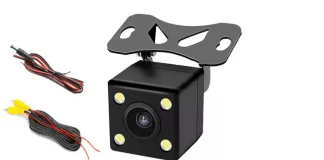Resistive Touch vs. Capacitive Touch
Touch Panels
All Android headunits have touch panels. Sometimes they are called a touch screen, but the display screen is a distinctly different part from the touch panel. The touch panel is straightforward and sits directly on top of the display. The touch panel is the thing that accepts finger taps and swipes. The display panel shows the images.
Touch panel technology
The two competing technologies behind the touch panel are Resistive and Capacitive Touch. They both accept finger taps and swipes on your Android headunit screen, but they do it in different ways.
Resistive Touch
Resistive Touch is the early and well-established form of touch input. Several layers of plastic and glass are made up to cover the entire display panel. The top layers of plastic will deform slightly when touched, which can change the layers’ electrical resistance. This electrical resistance change can be interpreted as a ‘touch’ on the panel.
The Disadvantages of the Resistive touch panel on an Android headunit are due to the multiple layers that make up the Resistive touch sensor. Multiple layers over the display panel can reduce the screen’s brightness and don’t quite show the actual display.
The advantages of Resistive touch panels for an Android headunit are the lower manufacturing costs over the Capacitive touch panel. Other advantages are excellent durability and a good reaction to touch by a gloved hand.
Capacitive touch panels
Capacitive touch panels are found on some Android headunits, and they operate by detecting the electrical charge transferred from the human body to the touch panel. The layers of a capacitive screen are still layered over the display panel, but they are not so bulky as they don’t need to flex.
The advantages of the Capacitive screen are better contrast and brightness from the screen under it than you get with a resistive touch panel. This is due to the fewer and thinner layers required to operate a capacitive touch sensor. Capacitive touch panels are more sensitive to the Touch of a human hand, allowing them to read more simultaneous touches. Five touch points are a common feature of a capacitive touch panel.
The cost is the disadvantage of the capacitive touch panel when used on an Android headunit. The higher cost of capacitive touch panels reserves the improved technology for the more premium models of Android headunit produced.
Due to the capacitive input detecting the electrical charge of the human body, using gloves won’t produce a successful tap response.
Future
We expect more Android headunits to be fitted with superior multi-touch capacitive touch panels. The cost to produce these panels has been dropping, and consumers expect a response more like their phone for their headunit.







